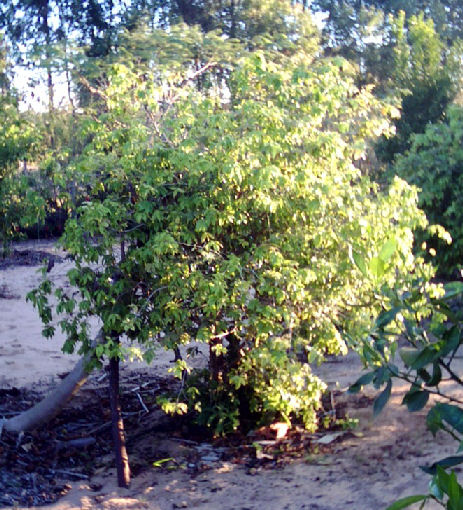

Plinia cauliflora (Jabuticaba)
The japoticaba (also called Brazilian Grape Tree, Jaboticaba, Jabotica, Guaperu, Guapuru, Hivapuru, Sabará and Ybapuru) is a fruit tree which is native of Brazil, Argentina and Paraguay. the fruit is purplish-black with white pulp, can be eaten in-natura or used for jam and juice.
The tree (called in the Portuguese language jabuticabeira in Brazil) has salmon-colored leaves when they are young, they turn gree later. It is a very slow-growing tree that prefers moist, slightly acidic soil for best growth. It is very adaptable, even as it grows satisfactory in sandy soil, as long as it is regularly watered and fertilized. Their flowers are white and appear on the trunks and larger branches, similar to the jackfruit, the Judas tree and the cocoa tree. In nature, the tree blooms and bears fruit only once or twice a year, but if it is being constantly watered, it blooms more frequently, and fresh fruits can be harvested throughout the year in the tropics.
The jaboticaba (Plinia cauliflora) from the genus Myrciaria and the family Myrtaceae is a small tree, which is native to Minas Gerais region near Rio de Janeiro in Southern Brazil, is grown because of the purple grapelike Fruits. The fruit has a diameter of 1.2 to 1.6 inches, contain 1 to 4 large seeds that appear directly on the main trunks and branches of the plant. It has a thick purple skin, which covers the sweet white to pink pulp. Often found on Brazilian markets, the jaboticabas are eaten fresh and in-nature.
A number of antioxidants that contribute to anti-cancer, were isolated in the fruit. We have at least 2 specimens in our garden.

One of our specimens in our yard in September 2008.

Close-up view of the main trunks of the jaboticaba in September 2009
Back to the Agricultural Plant List
Created by Joachim Jaeck on December 1st, 2009